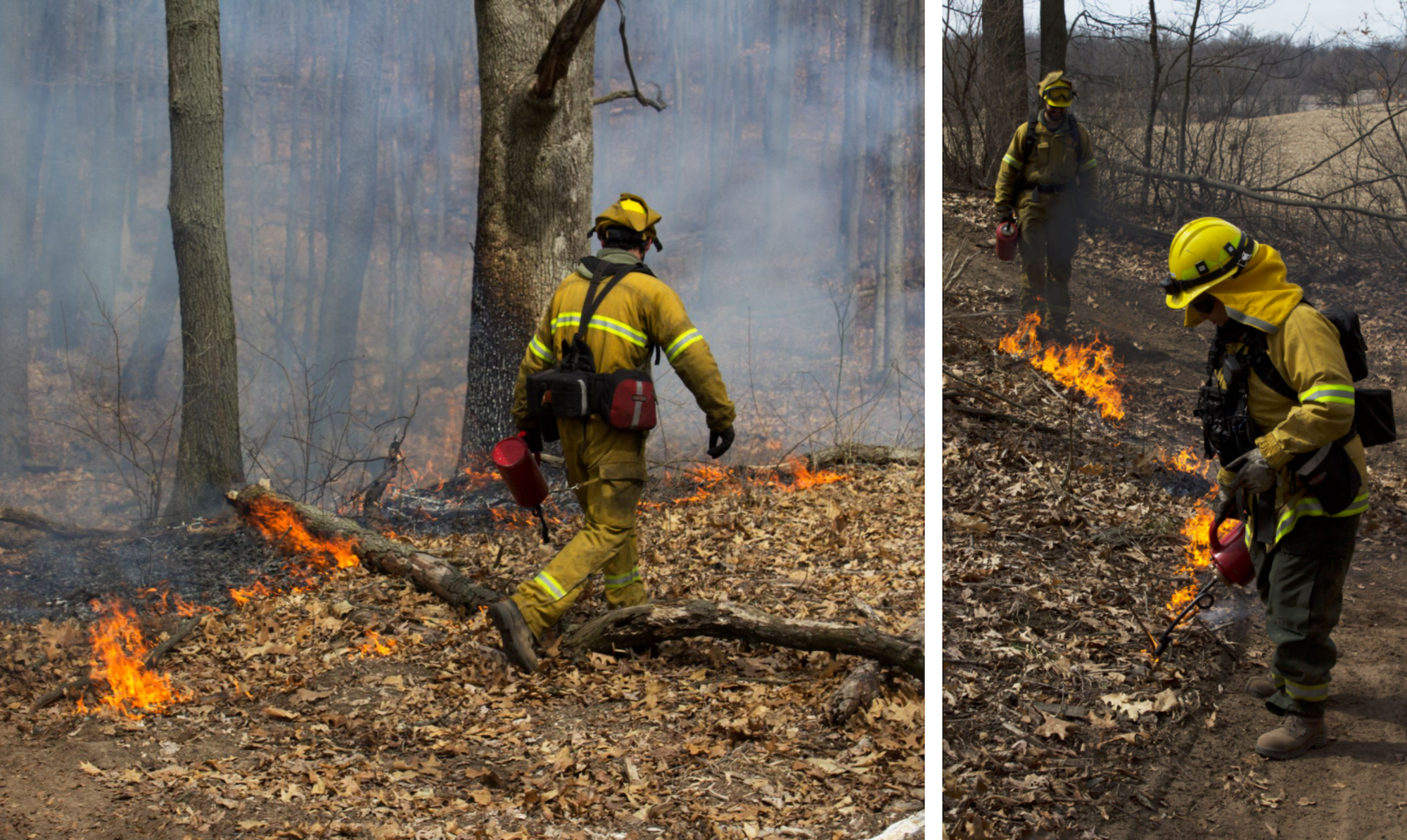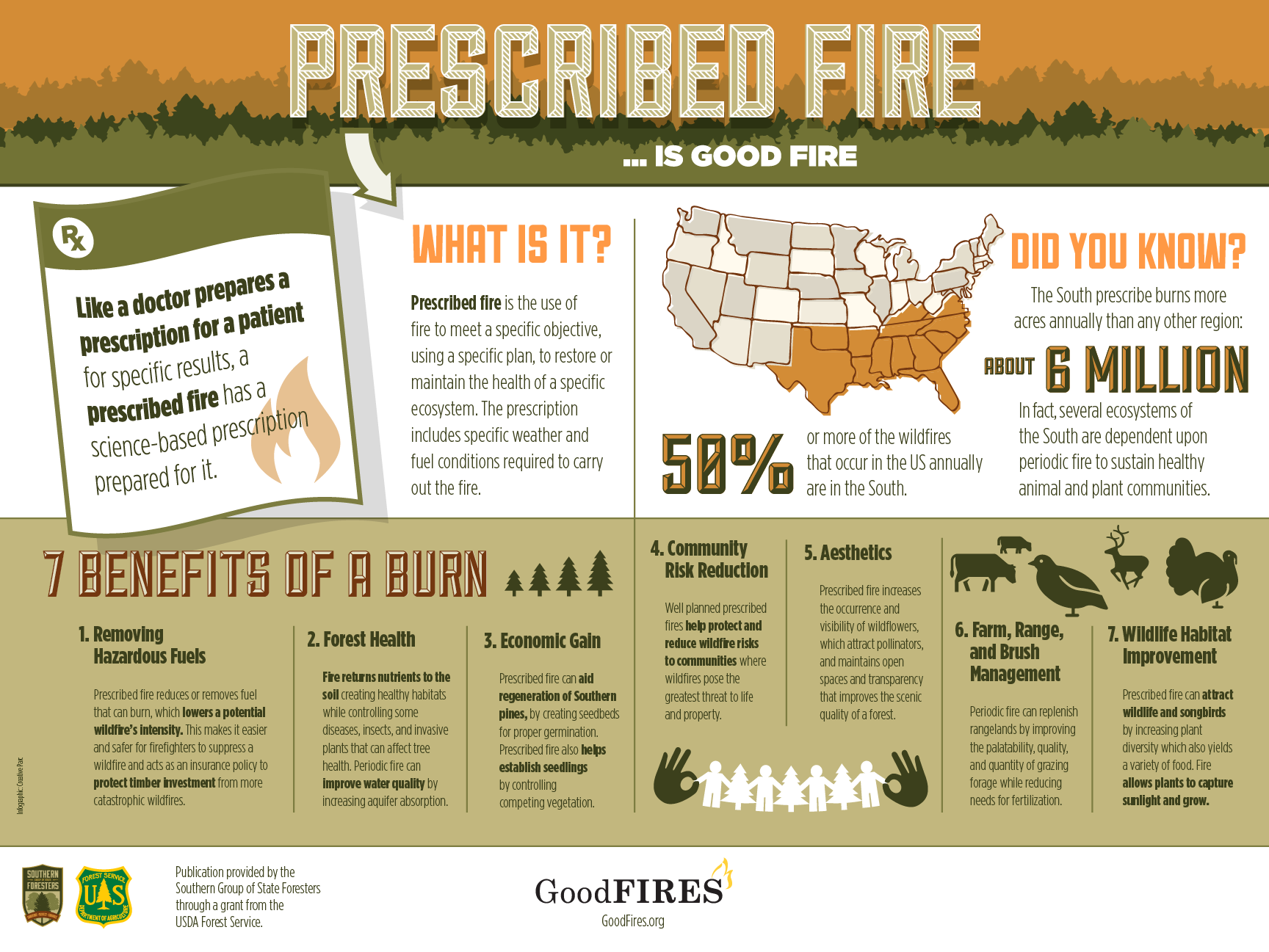By Whitney Forman-Cook | This blog is a cross-post and will appear in the Spring 2021 edition of the National Woodlands Magazine.
Natural forest disturbances—whether caused by pests, severe wind, lightning, or other means—change the structure and composition of forests and allow for regeneration. Many forest types need one natural disturbance in particular to regenerate, and that’s fire.
For many decades, fire-dependent landscapes (in the West, especially) weren’t allowed to burn because of human considerations. The long-time exclusion of fire in these areas has contributed to undesirable forest conditions, including what is called “overstocking,” which is when too many trees occupy the same growing space and compete against each other for limited resources. Overstocked forests are vulnerable to the effects of drought, disease, and other threats, and in turn, are prone to high rates of tree mortality.
Wildfires need fuel to burn—and dead and dying trees are some of the most dangerous wildfire fuels there are. The more fuel they have, the more difficult wildfires become to control.

Prescribed burns are fires carefully lit and monitored by trained professionals. They help build healthier forests by encouraging regeneration, controlling invasive species, and creating wildlife habitat. They also remove underbrush that if left unchecked, could provide fuels for bigger wildfires. Photos courtesy of the Michigan Department of Natural Resources.
Many land managers have increased their use of prescribed fire (that is, controlled burns) to actively manage landscapes that are at higher risk of wildfire. Since 2011, the National Association of State Foresters (NASF) and the Coalition of Prescribed Fire Councils (CPFC) have partnered to prepare reports (in 2012, 2015, 2018, and now 2020) on prescribed fire activity. These reports remain the only description of survey data available on the use of prescribed fire nationwide.
Encouragingly, the 2020 National Prescribed Fire Use Report found that in 2019, for the first time, the total forest and rangeland acreage treated with prescribed fire eclipsed 10 million acres. Specifically, 10,003,541 acres were treated in 2019—an increase of 28% over the 2011 total.
“When applied appropriately in fire-dependent ecosystems, the use of prescribed fire is critical to maintaining forest health and function, providing habitat for wildlife, enhancing soil and water conservation, and promoting public health and safety,” said George Geissler, NASF Wildland Fire Committee chair and Washington state forester. “Our jointly prepared reports help to inform current prescribed fire projects and guide future programs with baseline information that underscores the efficacy of prescribed fire as a resource management tool.”
Prescribed fire is used nationwide for reducing wildfire fuels, and depending on the locale, state, or region, prescribed fire can also help meet additional landowner management objectives. Prescribed burns can create wild turkey, deer, and quail habitat and help maintain healthy forests for hunting, farming, and range management.

In the South, where 50% or more of U.S. wildfires occur, early spring is the time to celebrate prescribed fire and all its benefits. You can learn more about Rx fire (as it is sometimes called) by searching social media for the hashtag #goodfire or with a visit to www.goodfires.org.
NASF and its members are strong proponents of prescribed fire utilization. Soon national legislation in support of prescribed burning will be introduced in Congress—we are thrilled to be among its champions. If you have questions about Rx fire, you are encouraged to reach out to your state forestry agency or NASF for answers.
Have questions? Contact Communications Director Whitney Forman-Cook.

